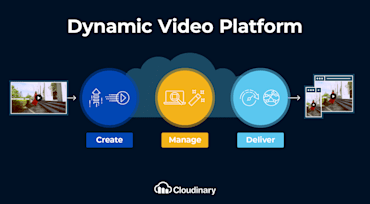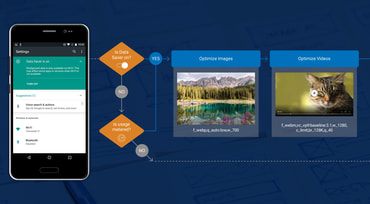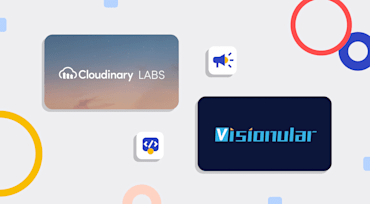Whether it’s for broadcast-quality live streaming, on-demand viewing, or interactive real-time communications, video is taking on growing prominence online. Through our recently announced Cloudinary Labs, we aim to stay in front of the latest developments and trends that help brands offer unbeatable experiences to their site visitors.

Delivering video files to users can be a much more complex undertaking than many people stop to consider. There are a large variety of video formats and codecs to choose between, and various optimization parameters for encoding the videos. Parameters such as bitrate, key-frame-interval, and frame-rate will have an effect on the visual quality and bandwidth requirements when delivering the video file. To make matters worse, there are so many potential viewing devices out there (desktops, laptops, tablets, mobiles, wearables, etc). Each of these devices have different browsers or apps, and they all support different formats and codecs!

Online video platforms (OVPs) first launched in the late 1990s and early 2000s with a similar promise to the once-iconic automobile brand: “Not your father’s Oldsmobile” campaign. However, as OVPs evolved, partly to address our insatiable appetite for video, they became more and more complex. Tools for every step of the video-delivery process—from ingestion to storage to encoding, and so forth—came with their own set of shiny knobs and dials. Configurations and procedures for even trivial tasks required a study of user manuals, causing disenchantment, stress, and aversion all around. Cloudinary is excited to be launching new, game-changing video-management capabilities today to tackle that challenge.

As discussed in this SpeedCurve blog post, video use on the Internet over the past decade has been exploding.
Accompanying that growth is additional bandwidth, which is burdensome for your IT budget and for your visitors. Beyond the expense, you must also consider user experience. The heavier the page, the longer it takes to load, and the greater the likelihood that visitors will abandon your site. Plus, page-load speed is an important factor in SEO ranking.

Over the life of a mobile device, the cost of a cellular data plan often exceeds that of the device itself. To optimize data usage and purge useless data on their mobile devices, users can enable Data Saver from Android 7.0 (API level 24). To do so, users toggle Data Saver in quick settings under the Notification shade or under Settings > Data usage. With Data Saver enabled, apps that aren't whitelisted cannot use cellular data in the background. They are also directed to consume less data while active.

Part 1 of this series discusses the optimal way of delivering progressive video streams by taking advantage of modern, efficient codecs. That approach is ideal for short-form (under 60 seconds) videos and for videos displayed at a low resolution, such as ads and previews. But what if you're delivering longer videos with a higher resolution? No matter that you could offer them as a single file through progressive streaming, your viewers might still run into issues, such as buffering, slow start of playbacks, or even playback failures.

Short-form videos—hero banners, product pages, ads, social content—are popping up on the web in places never seen before. This trend could become challenging because of the many formats and codecs, let alone inadequate expertise on what best to adopt for web consumption. Nowadays, most people are familiar with image formats (JPG, PNG, and so forth), but ask them about High Efficiency Video Coding (HEVC), Vorbis, and VP9, and their eyes glaze over.
